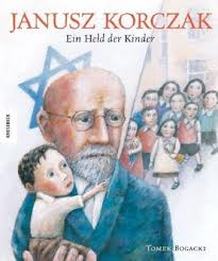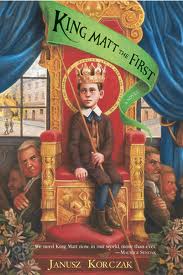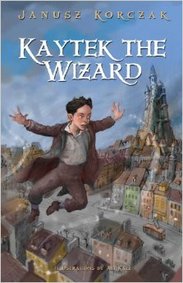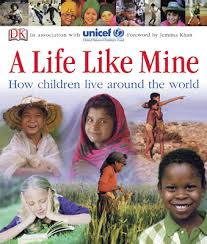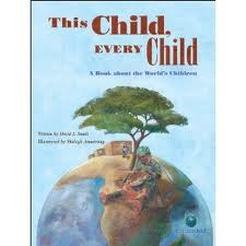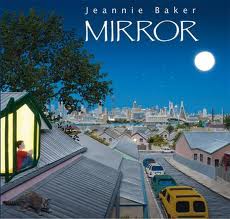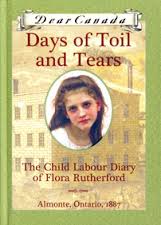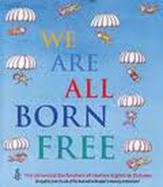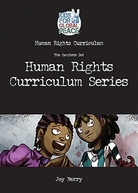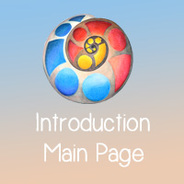The Champion of Children: The Story of Janusz Korczak by Ein Held der KinderIn 1912, a well-known doctor and writer named Janusz Korczak designed an extraordinary orphanage for Jewish children in Warsaw, Poland. Believing that children were capable of governing themselves, he encouraged the orphans to elect a parliament, run a court, and put out their own weekly newspaper. Even when Korczak was forced to move the orphanage into the Warsaw Ghetto after Hitler’s rise to power, and couldn’t afford to buy food and medicine for his charges, he never lost sight of his ideals. Fully committed to giving his children as much love as possible during a terrifying time, Korczak refused to abandon them.
In his most beautiful and heartfelt book to date, with evocative acrylic illustrations and spare, poignant prose, Tomek Bogacki tells the story of a courageous man who, during one of the grimmest moments in world history, dedicated his life’s work— and ultimately his life itself—to children. For more information on Janusz Korczak and why he was considered the King of Children go here. |
King Matt the First by Janusz KorczakJanusz Korczak was a Polish physician and educator who wrote over twenty books - his fiction was in his time well known as Peter Pan, and his nonfiction works bore passionate messages of child advocacy. During World War II, the Jewish orphanage he directed was relocated to the Warsaw ghetto. Although Korczak's celebrity afforded him many chances to escape, he refused to abandon the children. He was killed at Treblinka along with the children.
King Matt the First, one of Korczak's most beloved tales, is the story of a boy who becomes king and sets out to reform his kingdom. He decrees that all children are to be given a piece of chocolate at the end of each day. He visits faraway lands and befriends cannibal kings. Whenever his ministers tell him something's impossible, he puts them in jail. He disguises himself as a soldier and becomes a hero. But, as in real life, fantasy is tempered by reality:Matt's fellow kings become jealous of his success--and in the end, Matt falls, although it's clear that he was the greatest king there ever was.
Now this rediscovered classic is available again, and with a vibrant new cover by award-winning artist Brian Selznick. This timeless tale shows that only through the honesty and spontaneity of children can grown-ups begin to imagine and to create a better world. |
Kaytek the Wizard by Janusz KorczakKaytek, a mischievous schoolboy who wants to become a wizard, is surprised to discover that he is able to perform magic spells and change reality. He begins to lead a double life: a powerful wizard in the dress of an ordinary boy. It’s all great fun using magic to cause strange incidents in his school and neighborhood, but soon Kaytek’s increasing powers cause major chaos around the city of Warsaw. Disillusioned, he leaves the country and wanders the world in search of the meaning of his good intentions, his unique abilities, and their consequences. Revolving around the notion that power is not without responsibility, nor without repercussions, this story speaks to every child's dream of freeing themselves from the endless control of adults, and shaping the world to their own designs.
|
A Life Like Mine: How Children Live Around the World by UNICEFAll over the world children are leading their lives in completely different and fascinating ways. Faced with many challenges, they all have on thing in common – a passion for life. DK and UNICEF combine their inspirational forces to give remarkable insight into the lives children lead.
This book is based on the Convention on the Rights of the Child, that is a document drawn up and accepted by almost every country of the world. This document promises essential rights to every one of the world’s children. Each child, boys and girls equally, has a right to education, healthcare, food, shelter, ply and protection – and much more. For more information on UNICEF's Global Classrooms go here. |
This Child, Every Child - A Book About the World's Children by David J. SmithChildren make up on-third of the world’s population. but who are these 2.2 billion children and what are their lives like? Author David J. Smith’s search for answers takes readers around the world to meet children of all ages, nationalities and religions.
Young readers will discover that there are big differences in the way children live – and that not all children have access to clean air and water, adequate food, healthcare, education and other basic needs. To eradicate the inequalities, most countries in the world have signed the United Nations Convention of the Rights of the Child. Excerpts from the Un Convention complement the stories in this book and show what progress is being made to improve the lives of children. To see a Youtube clip on this book go here. |
Mirror by Jeannie BakerThis innovative picture book is comprised of two parts designed to be read simultaneously – one from the left, the other from the right. Page by page, we experience a day in the lives of two boys and their families – one from inner city Sydney, Australia, and the other from a small, remote village in Morocco, North Africa. These worlds couldn’t be further apart, yet with the showing of the parallel lives of the two families, we see a simple truth. We see that in the context of strikingly different lifestyles, remotely different countries, landscapes, differences of clothing and all. The families are essentially the same. They care for each other, they need to belong, to be loved by their loved ones and be a part of their community.
Read more about Jeannie Baker here. |
Days of Toil and Tears by Sarah EllisYoung Flora is happy to leave the orphanage behind and join her aunt and uncle, even though it means working at a textile mill where there is the constant threat of being injured or going deaf. She writes about her feelings in her diary, addressing her father and mother who died when she was five. Then her uncle loses several fingers at the weaving machine leaving him unable to work, and money is very tight. Can Flora help her aunt and uncle survive?
Days of Toil and Tears shows the hardships of life for poor children in the 1800’s, who often had to give up their childhood and work gruelling jobs so their families could survive. This is a good book to give to a preteen who enjoys historical fiction. |
We Are All Born Free - The Universal Declaration of Human Rights in PicturesThe Universal Declaration of Human Rights was signed on 10th December 1948. It was compiled after World War Two to declare and protect the rights of all people from all countries. This beautiful collection, published 60 years on, celebrates each declaration with an illustration by an internationally-renowned artist or illustrator and is the perfect gift for children and adults alike. Published in association with Amnesty International, with a foreword by David Tennant and John Boyne. Includes art work contributions from Axel Scheffler, Peter Sis, Satoshi Kitamura, Alan Lee, Polly Dunbar, Jackie Morris, Debi Gliori, Chris Riddell, Catherine and Laurence Anholt and many more!
|
Human Rights Curriculum Series by Joy BerryThe purpose of the KFGP Curriculum is to empower and motivate children and young people to assert their human rights with integrity and teach them how to do so in positive, productive ways.
|

